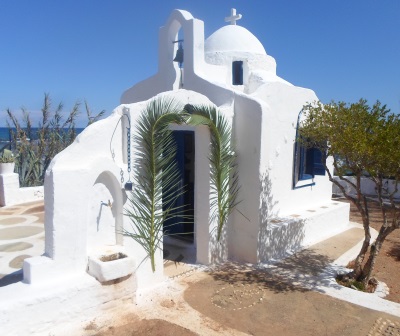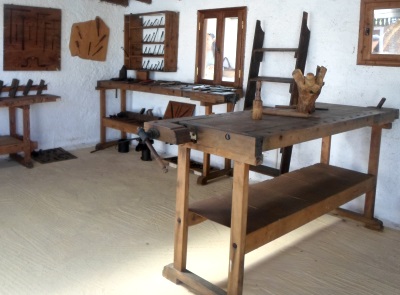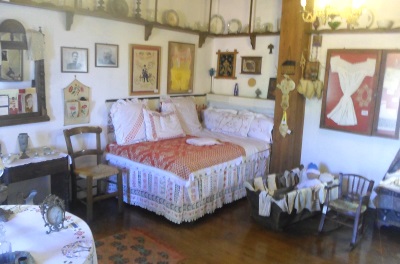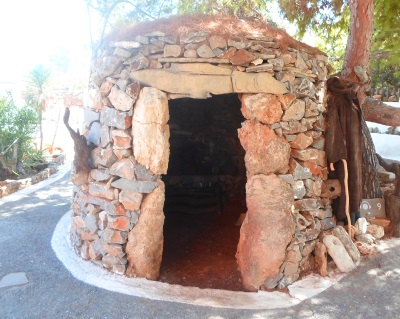|
Museum Lychnostasis Chersonissos |
|||
|
|
At the beginning you can watch the interesting film (about 20 minutes), which is shown in a room a few meters behind the entrance. Especially the second part of the film, which deals with the history and the purpose of the open-air museum, is worth seeing. You should take at least one hour (plus film) for the tour through the exhibition. An audio device, which the visitors get at the cash desk, informs in German in detail about the different parts of the museum.
Opening hours Museum Lychnostatis The museum is open during the season daily from 9 to 14 euros. Saturday is rest day. In winter the Lychnostatis Museum is closed. The season in Crete is from April to October (April 2017).. Entrance fee Lychnostatis Museum Admission to the open-air exhibition at the beginning of 2017 costs 5 euros for adults. Students pay 3 Euro. The entrance fee for children between 4 and 12 years of age is 2 Euro. Children under the age of 4 can be taken free of charge. If you come in a larger group, you can hope for a reduction. The audio guide and the film each cost one euro per person or device extra. Info status: April 2017
Location Museum Lychnostatis The museum area is a few hundred meters from the end of Hersonissos and can be reached from this tourist place without problems on foot. Leave Chersonissos on the main road towards Malia and a few metres after leaving the village, turn left down the small road towards the sea. One side of the open-air museum is directly on the shore. There are two entrances. The main entrance is under the connecting road from Chersonissos to Malia. The other entrance is directly on the beach. Tour of the museum The individual sights in the museum are numbered. Just type in the respective number on the audio device and you will hear the appropriate text. Besides, every visitor gets a leaflet with a clearly arranged map of the area. First you come to an orchard. You can see various fruit trees that are cultivated on the island. Next you will see a room with traditional workshops of Cretan craftsmen (carpentry and shoemaking). A highlight is surely a traditional stone house, which is furnished like some centuries ago on Crete. On the ground floor is the living room of a peasant family, upstairs the bedroom of a richer merchant family.
In the library of the museum in Chersonissos there are more than 1000 old books about the island of Crete. I especially liked a traditional shepherd's hut (Cretan: Mitado)
In remote mountain regions of the island, such very simple huts are still used today by some shepherds as a place to spend the night. The Lychnostatis Museum also houses other workshops, machinery and tools belonging to traditional craftsmen and farmers. These include an old threshing floor, a pottery, a weaving mill, a dyeing mill and an old loom. You should also take a closer look at the spice garden with Cretan herbs and medicinal plants as well as the cactus garden. Outstanding are an old raki distillery and a traditional windmill from the Lassithi plateau in Eastern Crete. Raki, also called Tsikoudia in Crete, is the traditional schnapps of the island. In dry Crete, groundwater was pumped to the surface by windmills until a few decades ago to irrigate the fields.
Don't forget the small chapel almost by the sea (see picture above). It stood here long before the museum was built. Almost at the end of the tour is a small café. Here you can try traditional Cretan drinks such as a non-alcoholic almond drink (soumada) or a cinnamon drink (kanelada) for only 1.50 euros. The carob coffee also sounds interesting on the drinks menu. But there is also beer, cola and hamburgers and much more at reasonable prices. The toilet in the museum is ok. My conclusion In my opinion, the open-air exhibition Lychnostatis is one of the best museums in Crete. The private collection was built up with a lot of love and passion for the island of Crete, its culture and nature. You get to see the largest island of Greece from a completely new perspective. I also think the idea of an open-air museum is great. The Lychnostatis Museum impressed me a lot. Every holidaymaker who is interested in the history and nature of the island should visit the open-air museum. The lady from the Netherlands at the entrance is very nice and answers every question gladly and competently. She speaks good German. The location of the museum is also ideal. You can combine a visit to the museum with a stay on the neighbouring beach. The water park "Star Beach Water Park" with gigantic water slides and much more is only a few hundred meters away. I hardly noticed anything negative. Maybe you could do without the first half of the movie (General about Crete). But the second part of the film (story and idea of the museum Lychnostatis) is all the more exciting. The homepage www.lychnostatis.gr should be improved and above all completed. Status of information September 2016, partially updated early season 2017 and 2018 Another interesting sight nearby is the Aquarium of Crete in Gournes. In Chersonissos there are other sights, among others a small zoo and the amusement park Labyrinth Park.
|
||




